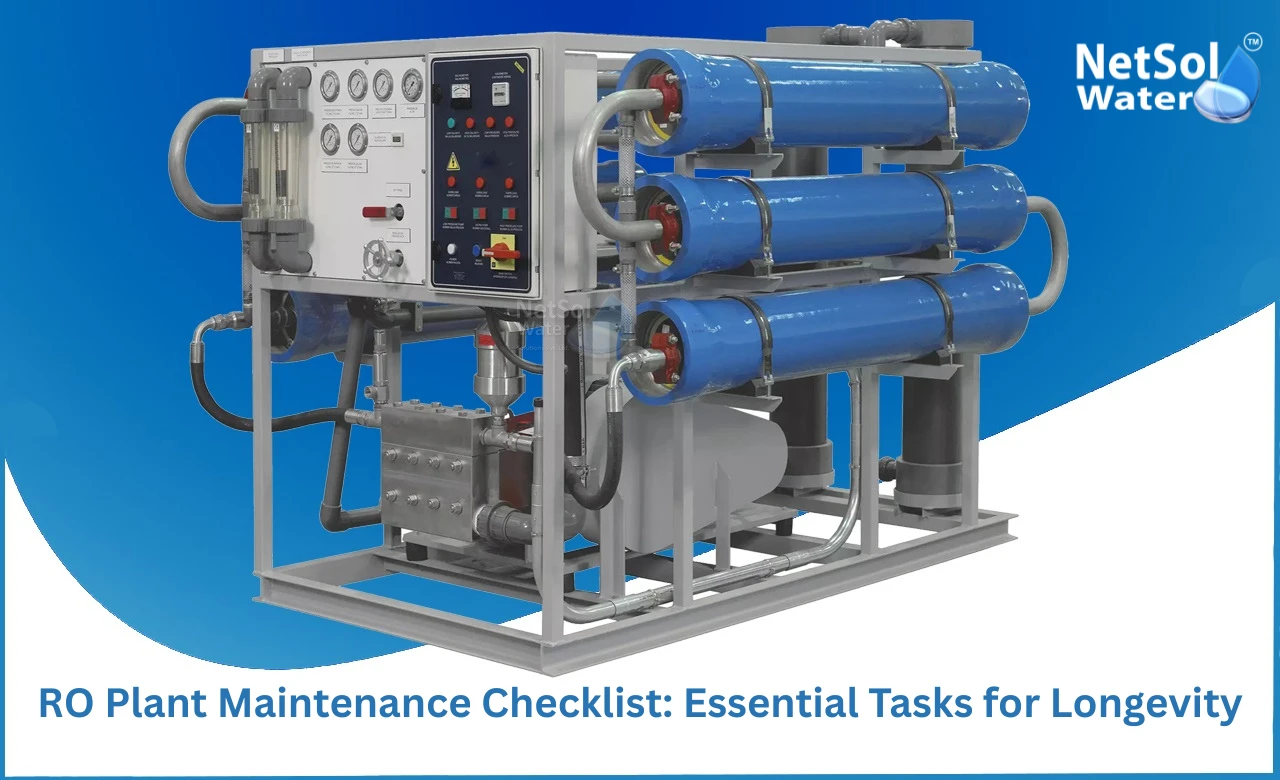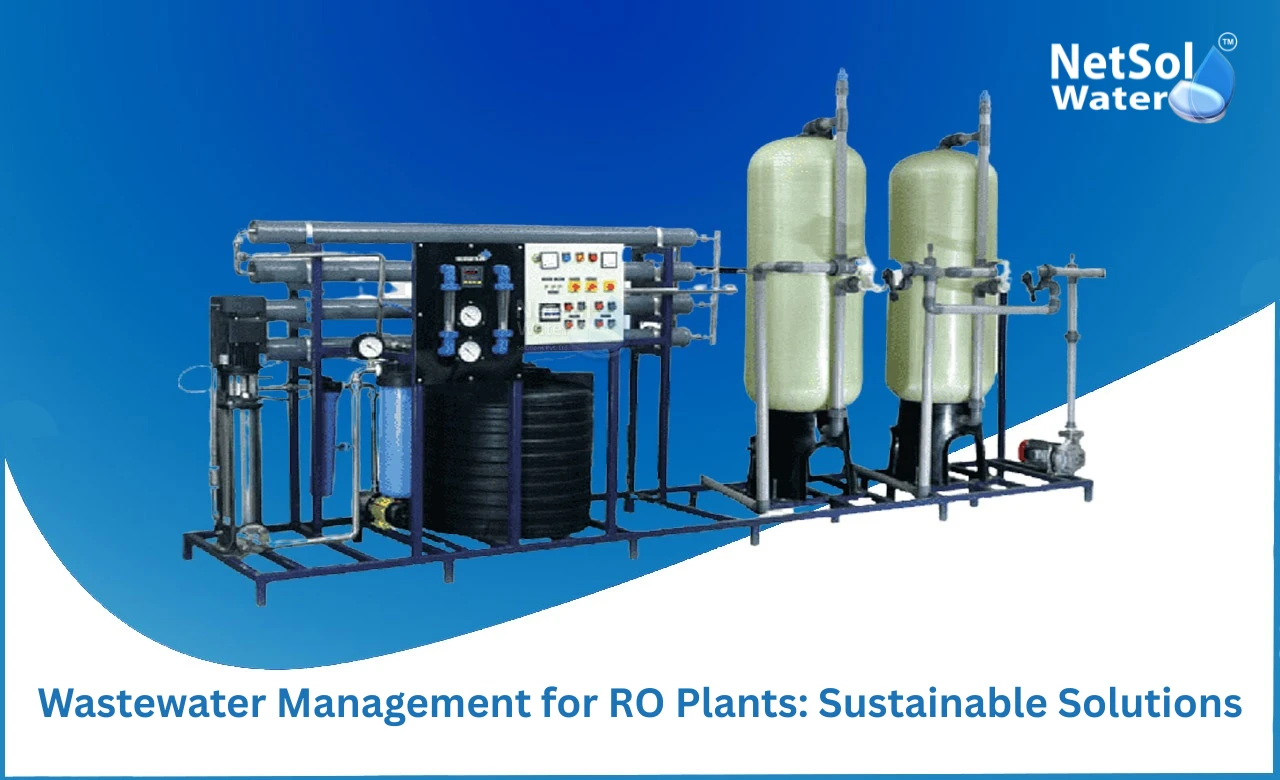RO Plant Maintenance Checklist: Essential Tasks for Longevity
India has many places that face water stress and varied water quality. Cities and villages need clean water every day and they need plants that last. Netsol Water is the leading RO Plant Manufacturer and we design plants that work well in many climates and for different water sources. We will explain the basic checks and care routines for daily, weekly, monthly and yearly needs.
Daily and Weekly Maintenance Tasks
Maintenance at short intervals keeps small problems from growing into major faults. Regular checks help operators spot changes in pressure flow and water taste. Let us have a look on some daily and weekly tasks that matter. These tasks start with visual checks and move to simple testing.
Membrane Care
Membranes form the heart of any RO plant. Operators must monitor permeate flow and reject rate each day. If flow falls or salt passage rises the membrane needs attention. Clean the membrane when signs of fouling appear. Use cleaning chemicals that the membrane maker approves. Follow the chemical dosing instructions and flush the system well after cleaning. Proper membrane care extends life and keeps water quality steady.
Pre Filter Checks
Pre filters stop large particles and protect the membrane. Check the pre filters each day for pressure drop. Replace cartridges when the pressure rises beyond the normal range. Inspect housings for leaks and seals that show wear.
Sanitization and Minor Repairs
Sanitize the system weekly if the plant serves potable water. Use safe sanitizing methods and let the system dry well after sanitizing. Tighten loose fittings and replace worn gaskets. Keep a log of repairs and cleaning. A clear log helps track recurring faults and shows when parts fail more often.
Monthly and Annual Maintenance Tasks
Monthly and yearly work keeps the plant in stable long term condition. These tasks need more time and more tools. Let us have a look on some monthly and yearly jobs and how to plan them. Plan these tasks so the plant faces minimal downtime.
Pump and Motor Service
Pumps and motors need inspection and lubrication on a monthly basis. Check motor bearings for noise and heat. Measure current draw to spot abnormal load. Clean cooling fins and ensure electrical connections remain tight. Replace worn belts and check coupling alignment. Yearly service should include bearing checks and motor insulation tests. Well kept motors run longer and use less power.
Chemical Dosing and Water Testing
Check chemical dosing systems every month. Refill chemical tanks and inspect dosing pumps for correct stroke and timing. Test water chemistry monthly to confirm product water meets standards. Test for parameters like TDS conductivity and microbial counts. Keep a record of the results. If tests show drift take corrective action at once. Annual calibration of instruments keeps test results reliable.
Structural and Safety Checks
Inspect tanks valves and piping each month. Look for corrosion leaks and scaling. Service safety devices like pressure relief valves and alarm systems. Test emergency stop functions and interlocks. Annual inspection should include a full survey of the plant foundation and supports. A safe plant protects staff and reduces risk of major failure.
Troubleshooting and Spare Parts Management
Fast diagnosis and ready spare parts reduce downtime and cost. A clear troubleshooting plan helps technicians act fast. Let us have a look on common faults and how to prepare for them. This helps teams restore service with less stress.
Common Faults and Actions
When pressure falls check feed water supply and pre filters first. If product water TDS rises check the membrane and the high pressure pump. Strange noises often point to cavitation or bearing failure. Record symptoms and consult the maintenance log. A step by step approach saves time and often avoids unnecessary part changes.
Spare Parts and Inventory
Keep a stock of critical spares like membranes cartridges seals and dosing pump parts. Track spare use and reorder before stock runs out. A good inventory plan includes estimated lead times and preferred vendors. Train staff to swap parts and to test the system right after replacement. A ready spare stock reduces emergency procurement and speeds repairs.
Read some interesting information for Commercial RO Plant Manufacturer in Noida
Conclusion
A clear maintenance plan keeps an RO plant efficient and reliable. Regular daily checks and planned monthly and annual work protect system components and ensure steady water quality. Netsol Water is the leading Reverse Osmosis Plant Manufacturer and we can help you set up a maintenance schedule and supply genuine parts. Contact us for more information or to request a consultation. We will guide you to keep your plant running well.
Contact Netsol Water at:
Phone: +91-9650608473
Email: enquiry@netsolwater.com


